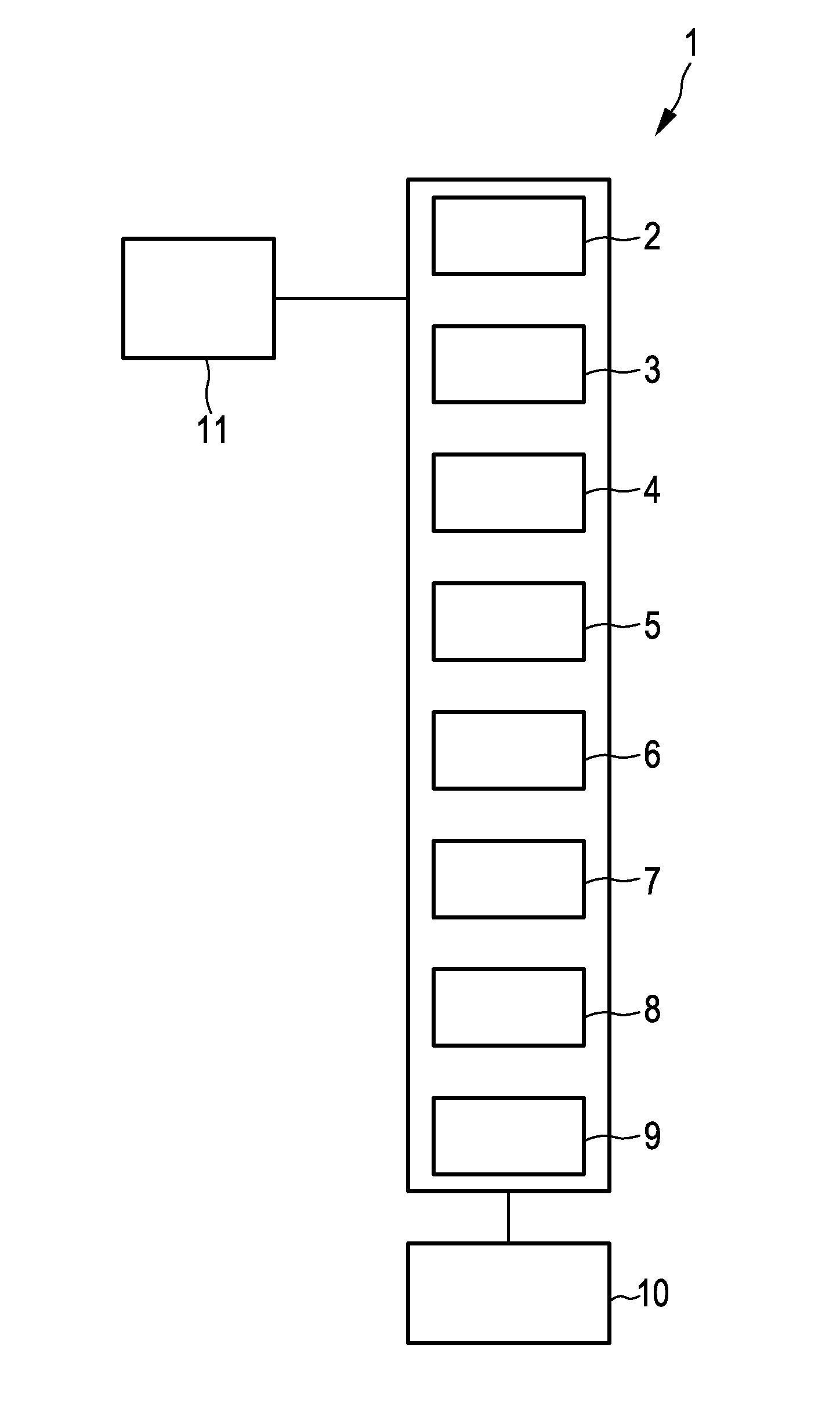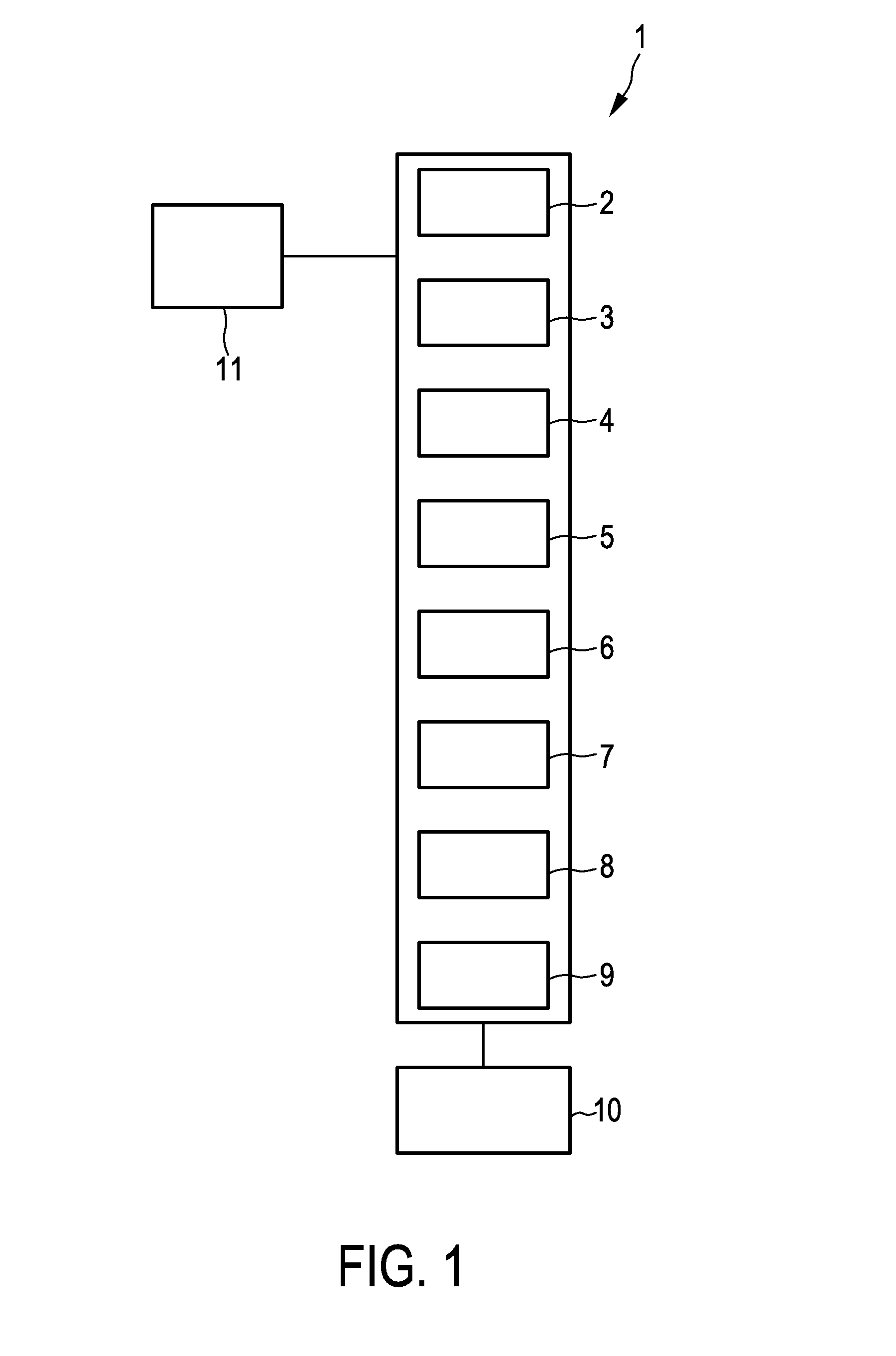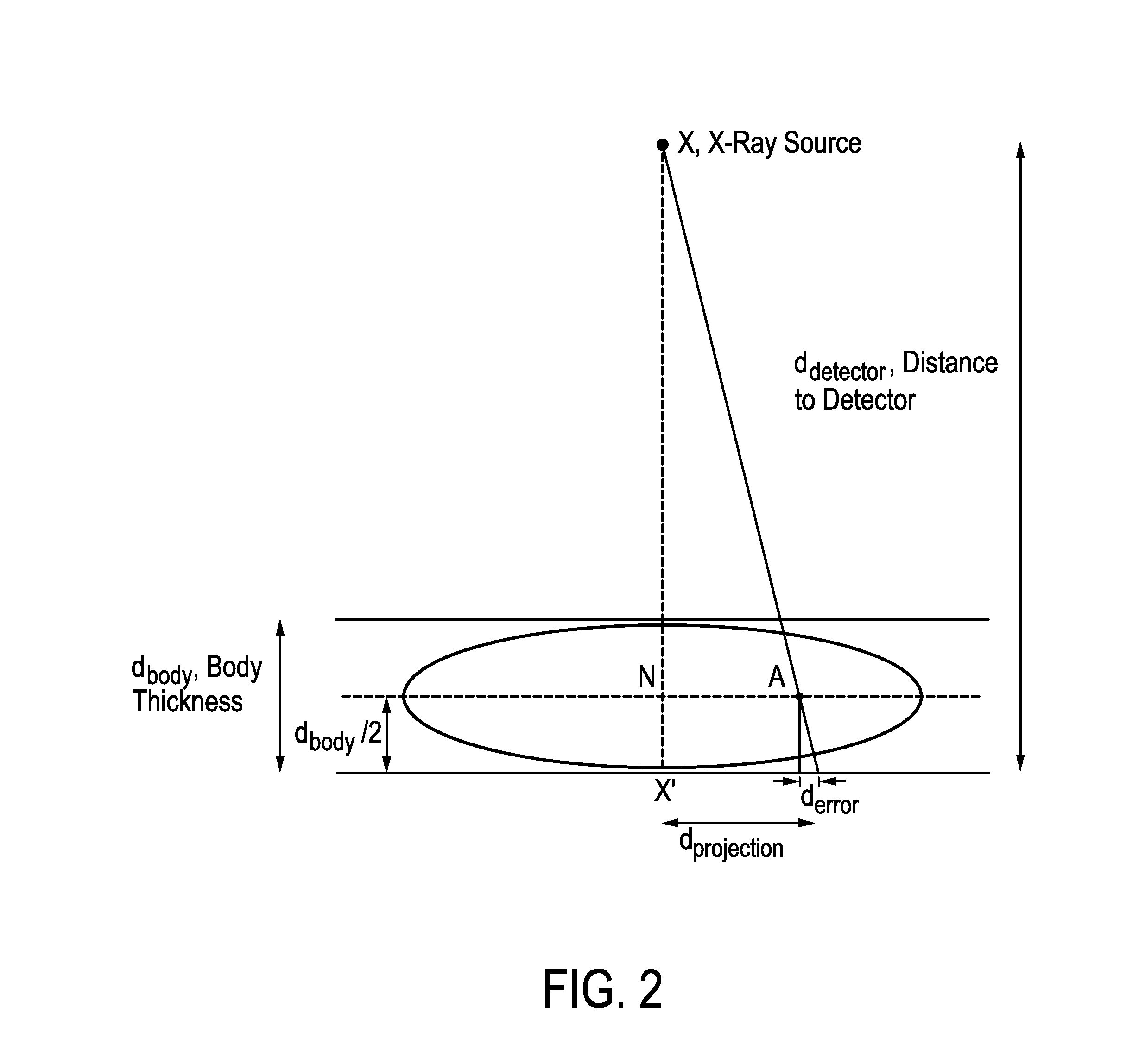Image processing device for finding corresponding regions in two image data sets of an object
a technology of image processing and object, applied in image analysis, image enhancement, instruments, etc., can solve the problems of high cost, high computational complexity, and inability to find corresponding regions in two image data sets of objects, so as to improve the speed and confidence of the workflow
- Summary
- Abstract
- Description
- Claims
- Application Information
AI Technical Summary
Benefits of technology
Problems solved by technology
Method used
Image
Examples
Embodiment Construction
[0099]FIG. 1 shows schematically and exemplarily an embodiment of an image processing device for finding corresponding regions in two image data sets of an object. The image processing device 1 comprises an image providing unit 2 for providing a first image data set of the object and a second image data set of the same object. In this embodiment, the object is a breast, and one of the first image data set and the second image data set comprises a three-dimensional MR image of the breast and the other of the first image data set and the second image data set comprises a CC mammography image and an MLO mammography image of the breast. The CC mammography image and the MLO mammography image are projection images with different projection directions, wherein the breast is compressed in the respective projection direction between two parallel plates. In other embodiments, instead of the MLO mammography image an ML mammography image can be provided. In general, the first image data set and...
PUM
 Login to View More
Login to View More Abstract
Description
Claims
Application Information
 Login to View More
Login to View More - R&D
- Intellectual Property
- Life Sciences
- Materials
- Tech Scout
- Unparalleled Data Quality
- Higher Quality Content
- 60% Fewer Hallucinations
Browse by: Latest US Patents, China's latest patents, Technical Efficacy Thesaurus, Application Domain, Technology Topic, Popular Technical Reports.
© 2025 PatSnap. All rights reserved.Legal|Privacy policy|Modern Slavery Act Transparency Statement|Sitemap|About US| Contact US: help@patsnap.com



